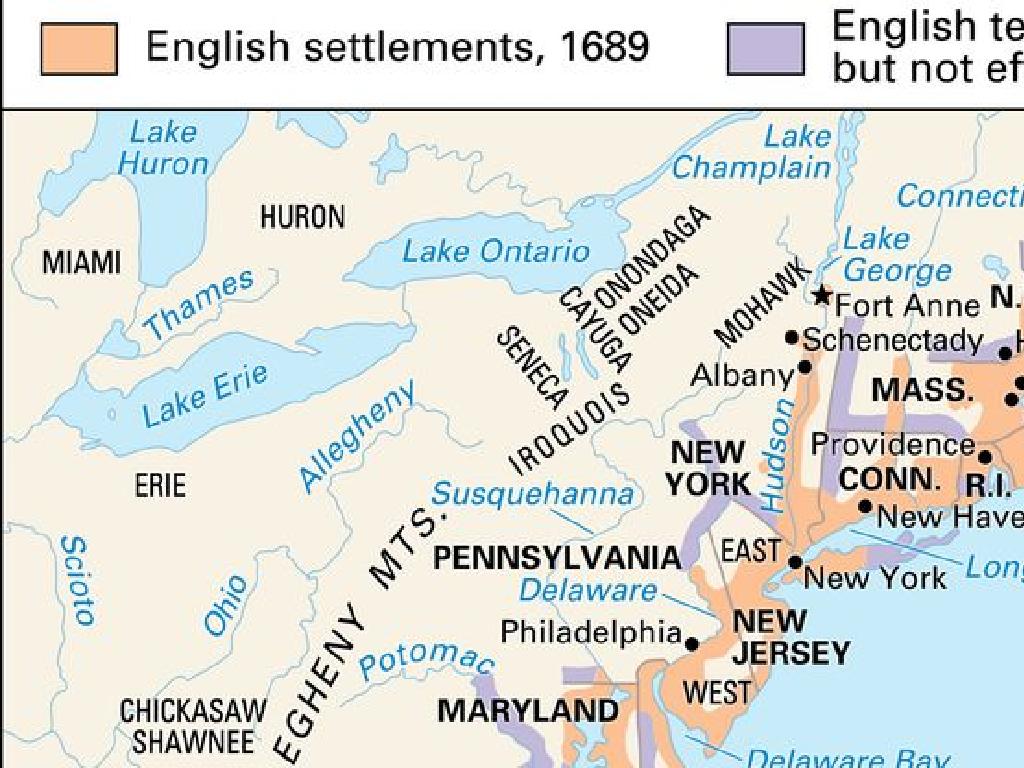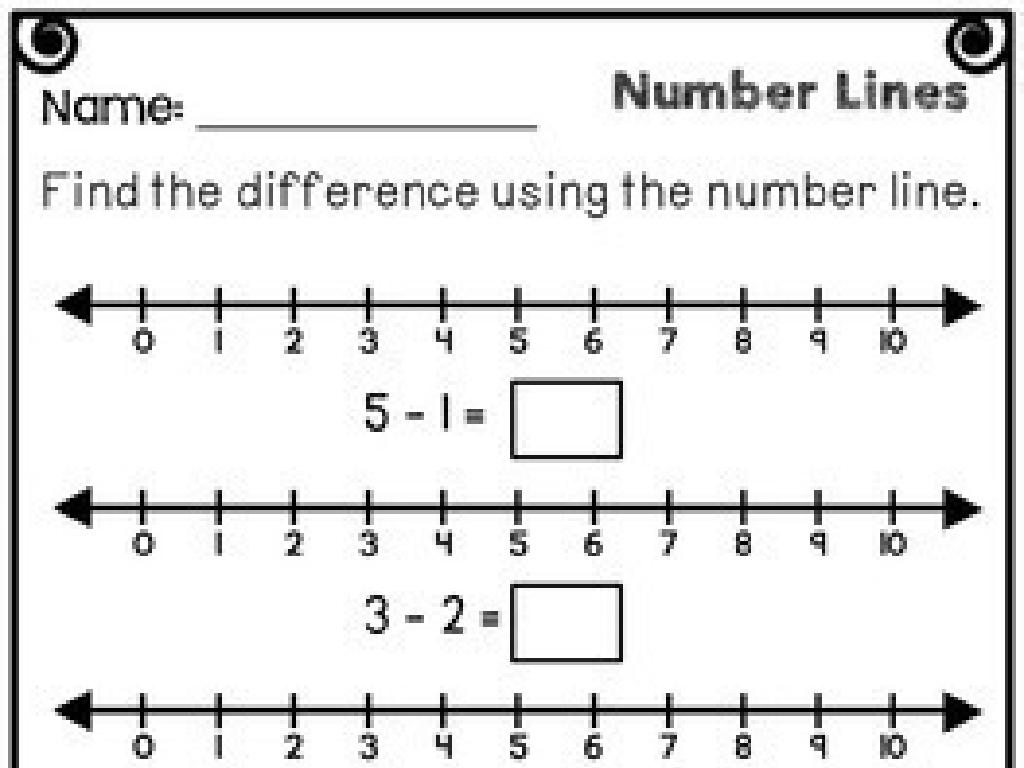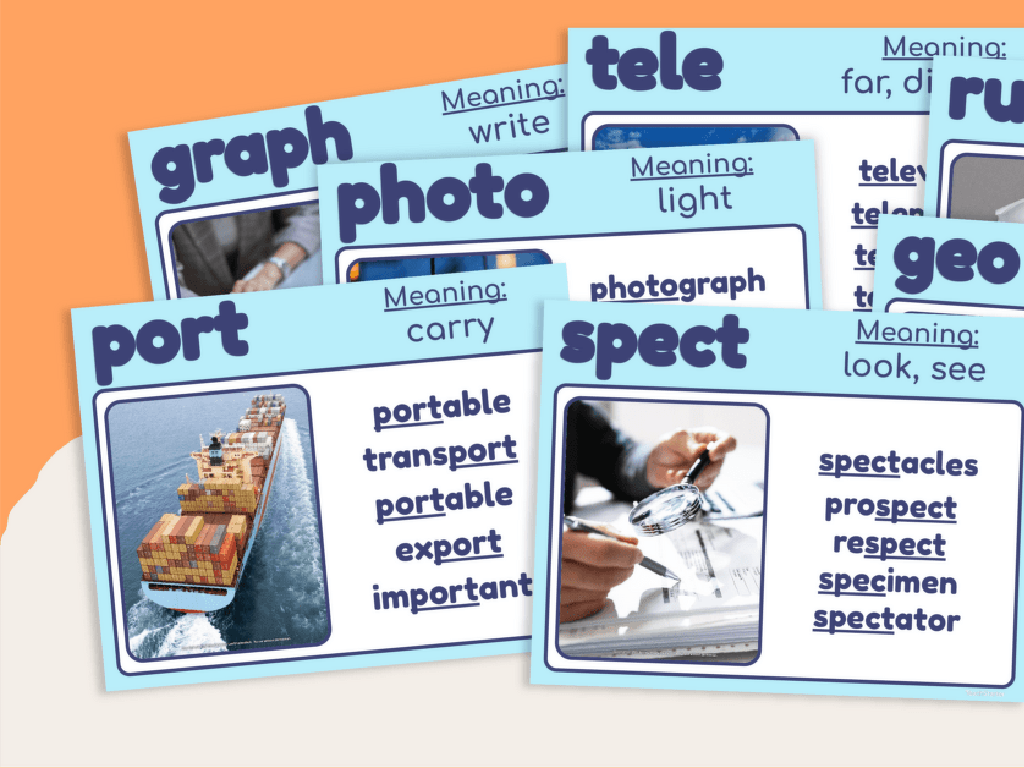Select Even And Odd Numbers - Up To 100
Subject: Math
Grade: Second grade
Topic: Even And Odd
Please LOG IN to download the presentation. Access is available to registered users only.
View More Content
Welcome to Even and Odd Numbers!
– Learn about even and odd numbers
– Difference between even and odd
– Even numbers end in 0, 2, 4, 6, or 8
– Identifying even numbers up to 100
– Numbers like 2, 14, and 98 are even
– Identifying odd numbers up to 100
– Numbers like 1, 35, and 99 are odd
|
Begin the lesson by explaining that numbers are categorized as even or odd based on their last digit. Even numbers are divisible by 2 and always end with 0, 2, 4, 6, or 8. Odd numbers are not divisible by 2 and end with 1, 3, 5, 7, or 9. Use number lines, counters, or objects to demonstrate the concept visually. Encourage students to practice by identifying whether numbers up to 100 are even or odd. Provide examples and let them work in pairs or groups to categorize a list of numbers. This will help solidify their understanding and prepare them for more complex math concepts.
Exploring Even Numbers
– Even numbers split into two groups
– Examples: 2, 4, 6, 8, 10
– These are all even because they divide perfectly by 2
– No leftovers in even numbers
– Look for 0, 2, 4, 6, 8 at the end
– Numbers ending in these digits are always even
|
This slide introduces the concept of even numbers to second-grade students. Emphasize that even numbers are special because they can be divided into two equal groups with nothing left over. Show them that even numbers are all around us, using simple examples like pairs of socks or the wheels on a car. Highlight the pattern that numbers ending in 0, 2, 4, 6, or 8 are always even, which is an easy way for them to identify even numbers up to 100. Encourage the students to practice by identifying even numbers in their environment or within a list of numbers you provide.
Exploring Odd Numbers
– Odd numbers can’t split evenly
– Examples: 1, 3, 5, 7, 9
– These are the first few odd numbers
– Odd numbers end in 1, 3, 5, 7, 9
– Look at the last digit to find odd numbers
– Odd numbers have leftovers
– Imagine sharing candies; one is always left without a pair
|
This slide introduces the concept of odd numbers to second-grade students. It’s important to explain that odd numbers are those that cannot be divided into two equal groups without having one leftover. Use simple examples like sharing candies or toys to illustrate the concept of ‘leftovers’ when trying to split odd numbers evenly. Highlight the pattern that all odd numbers end in 1, 3, 5, 7, or 9 to help students easily identify them. Encourage students to look for these patterns in everyday life, such as house numbers or pages in a book. The goal is for students to understand and recognize odd numbers up to 100.
Let’s Practice: Even and Odd Numbers
– Identify even and odd on a number line
– Look at numbers and see if they end in 0, 2, 4, 6, or 8 for even and 1, 3, 5, 7, or 9 for odd
– Understand why 15 is odd and 20 is even
– 15 ends in 5 (odd), 20 ends in 0 (even)
– Practice with a friend: 32 even or odd?
– Discuss with a classmate and decide if 32 is even or odd
|
This slide is aimed at helping second-grade students practice identifying even and odd numbers up to 100. Start by explaining that even numbers are those which can be divided by 2 without leaving a remainder, and they end in 0, 2, 4, 6, or 8. Odd numbers cannot be evenly divided by 2 and end in 1, 3, 5, 7, or 9. Use a number line as a visual aid to help students identify even and odd numbers. For the interactive part, ask students why the number 15 is odd (because it ends in 5) and why the number 20 is even (because it ends in 0). Then, have students pair up and practice by picking out numbers and deciding if they are even or odd, starting with the number 32. Encourage them to explain their reasoning to each other. This activity promotes peer learning and reinforces the concept of even and odd numbers.
Even and Odd Patterns
– Even numbers pattern
– Start with 2, add 2: 2, 4, 6, 8…
– Odd numbers pattern
– Start with 1, add 2: 1, 3, 5, 7…
– Creating patterns together
– Use the board to make number patterns
– Understanding even and odd
|
This slide introduces the concept of patterns in even and odd numbers. Explain that even numbers can be found by starting with the number 2 and adding 2 each time. Similarly, odd numbers start with 1 and by adding 2, we get the next odd number. Engage the class by creating these patterns on the board as a group activity. Ask students to come up and extend the sequence, reinforcing the pattern recognition. Emphasize that even numbers can be divided evenly by 2, while odd numbers cannot. This will help students to understand and identify even and odd numbers up to 100.
Games with Even and Odd Numbers
– Learn even & odd through games
– Sorting game with numbers
– Sort 14, 27, 36, 55 into even or odd
– Hopscotch game instructions
– Hop on evens, skip odds during play
– Practice makes perfect
|
This slide introduces fun games to help second graders understand even and odd numbers. For the sorting game, provide students with a mix of even and odd numbers and ask them to categorize them correctly. Use physical number cards or a digital tool for this activity. In the hopscotch game, students will only hop on even numbers and skip the odd numbers, reinforcing their ability to recognize and differentiate between even and odd. Encourage students to practice these games in class or at home to solidify their understanding. Possible variations of the hopscotch game can include calling out numbers for students to respond to or using a dice to generate random numbers for the game.
Class Activity: Number Hunt
– Let’s go on a number hunt!
– Find even or odd numbered objects
– Look for items like 2 erasers or 5 pencils
– Work in pairs for the hunt
– List all even and odd objects found
– Make two lists: one for even, one for odd
|
This activity is designed to help students recognize and categorize even and odd numbers through a fun and interactive classroom exercise. Have the students work in pairs to foster teamwork and communication. Provide examples of what to look for, such as pairs of scissors (even) or a group of markers (odd). Encourage them to explore the classroom thoroughly. After the hunt, regroup and discuss the findings. Possible variations of the activity could include: 1) Timing the hunt to add excitement, 2) Assigning specific areas of the classroom to each pair to ensure coverage, 3) Having students present their findings to the class, 4) Creating a tally chart on the board to keep track of the even and odd objects found.
Even and Odd Numbers: Wrap-Up and Homework
– Congrats on learning even and odd!
– Even numbers: 0, 2, 4, 6, 8
– Numbers ending in these digits are even
– Odd numbers: 1, 3, 5, 7, 9
– Numbers ending in these digits are odd
– Homework: Find 20 numbers
– 10 even and 10 odd numbers from around your home
|
Great work today, class! You’ve learned a valuable math concept about even and odd numbers. Remember, even numbers are those which end in 0, 2, 4, 6, or 8 and can be divided evenly by 2. Odd numbers end in 1, 3, 5, 7, or 9 and cannot be divided evenly by 2. For homework, encourage students to explore their surroundings at home to find and write down 10 even and 10 odd numbers. This could be from objects around the house, page numbers from books, or anything with numbers on it. This exercise will help reinforce their understanding of even and odd numbers in a fun and practical way.






